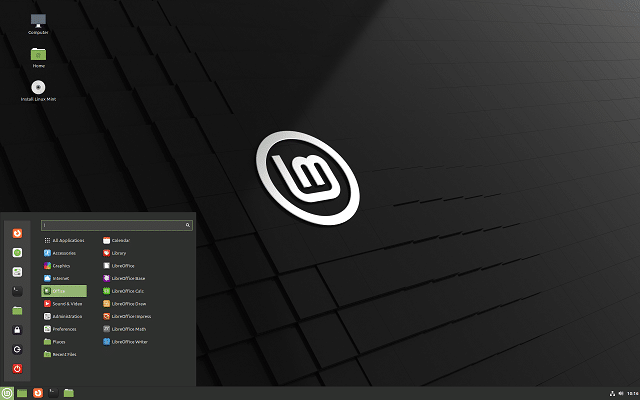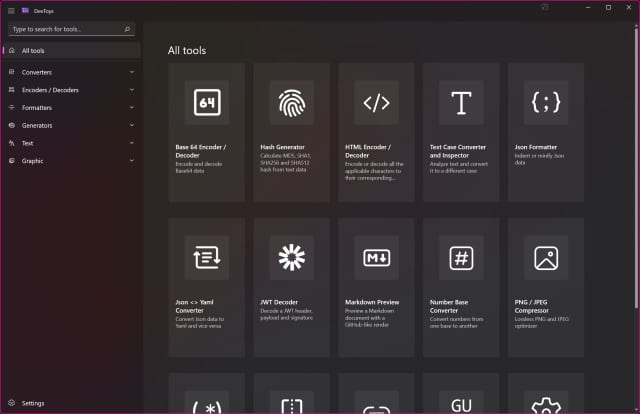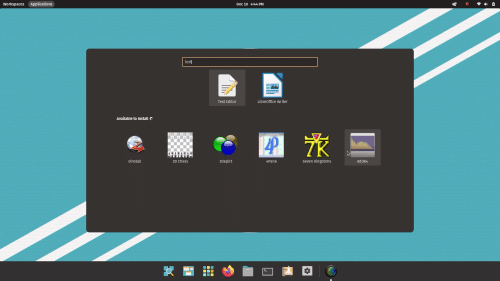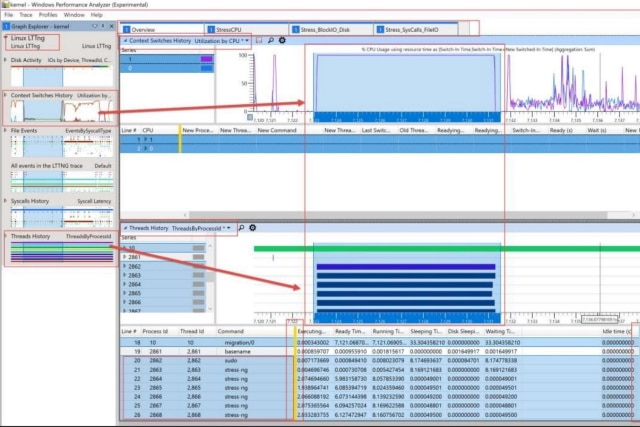
Enterprises more likely to choose vendors who contribute to the open source community
Open source software is usually selected for reasons like flexibility, access to development resources and cost. But the latest State of Enterprise Open Source report from Red Hat shows that 82 percent of decision makers are more likely to choose a vendor that contributes to the open source community.
Top reasons given for preferring these vendors are that they're familiar with open source processes and help sustain healthy communities -- both cited by 49 percent of respondents -- that they can influence the development of features (48 percent) and that they are likely to be more effective in the face of technical challenges (46 percent).

Linux Mint Debian Edition (LMDE) 5 'Elsie' BETA now available for download
Debian is a great Linux distribution in its own right, but also, it serves as a base for many other operating systems. For instance, two of the best Linux distros, Ubuntu and deepin, are based on Debian.
Linux Mint is a popular operating system based on Ubuntu, but did you know there is actually a lesser-known variant of the operating system based on Debian? It's true! The unimaginatively named "Linux Mint Debian Edition" (aka LMDE) cuts out the Ubuntu middleman and is based on Debian directly.

Companies are only aware of 17 percent of their open source components
A new report based on data from more than 100 open source audit projects conducted in 2021 finds that companies are only aware of 17 percent of the open source components they use, an increase of just four percent in the past year.
The 2022 State of the Software Supply Chain Report from Revenera also shows that risks are increasing.

Surge in demand for digital council services as pandemic drives people online
Local councils in the UK report a 27 percent increase in the use of digital services over the 12 months from summer 2020, compared to the previous year.
Digital experience company Acquia used freedom of information requests to compile the report, which also suggests the UK government’s drive to encourage usage of digital services is bearing fruit with local councils making considerable strides to improve accessibility.

Kick Microsoft Windows 11 to the curb and switch to Linux Lite 5.8 right now!
Windows 11 is a rather good operating system. In fact, I can confidently say it is the best desktop operating system Microsoft has ever created. Seriously, folks, it is a pleasure to use. If your computer is compatible with it, and you like Windows 10, you should enjoy Windows 11 even more.
With all of that said, Windows 11 can be a bit polarizing. It features radical changes to the user interface (such as a centered task bar) which I adore, but some users may dislike. Not to mention, the system requirements will leave many still-capable computers unable to upgrade without using unofficial hacks. Even worse, computers deemed incompatible could eventually stop getting updates! These unfortunate computer owners will have to decide whether to continue using Windows 10 or buy a new Windows 11-compatible PC.

DevToys is like an open-source Microsoft PowerToys for developers
We have written about PowerToys quite a lot here on BetaNews. Microsoft has put a lot of work into building a useful collection of tools and utilities for Windows 11 users, and it is incredible to see each new addition and development.
PowerToys is aimed at power users looking to get more from their computers, and now there is a utilities collection designed with developers in mind. Described as a "Swiss Army knife for developers", DevToys comprises 14 outrageously useful tools and has just hit a major milestone.

Run Windows apps on Linux with Wine 7.0
It used to be, people would scoff at the idea of switching to a Linux-based operating system due to a lack of software. While that is still true for some folks -- especially business users -- it is less of a concern these days. Why? Well, so many things are done through the web browser nowadays, lessening dependence on Windows software. For many consumers, just having the Google Chrome browser on, say, Ubuntu, is more than enough to accomplish their wants and needs. Not to mention, there are many quality Linux apps like GIMP and DaVinci Resolve.
But OK, lets say you really want to use a Linux-based operating system, but there's some Windows-only software that you absolutely cannot live without. Thankfully, you may still be able to ditch Windows and upgrade to something like Fedora or Linux Mint. How? Thanks to the excellent Wine! This compatibility layer (don't you dare call it an emulator), can sometimes enable you to run Windows software on Linux. Today, version 7.0 is released.

Open source tool helps in the fight against log4j vulnerability exploits
Since the Log4Shell attack targeting a log4j vulnerability was first uncovered towards the end of last year it's posed a threat to web servers worldwide.
It's a tricky problem to address because doing so means updating software dependencies. Meanwhile attackers are seeking to inject text into log messages or log message parameters, then into server logs which can then load code from a remote server for malicious use, using obfuscation techniques to hide from security software.

Install Linux Mint 20.3 'Una' this weekend if you have absolutely nothing better to do
Well, folks, we finally made it; the weekend is officially here! Hopefully you have some exciting activities planned. Maybe you are going to a party or taking someone out for a romantic dinner date. Or maybe, just maybe, you have absolutely nothing planned. You know what? That's OK. A lot of people are lonely and/or have no prospects. And for them, Linux exists.
Thankfully, Linux Mint 20.3 (code-named "Una") has finally exited beta, giving countless computer nerds around the world something to do this weekend. And yes, this includes me -- I had nothing planned other than a trip to Costco on Saturday and watching my New York Jets lose on Sunday. But now I will be installing the stable version of Linux Mint 20.3 "Una" as well. Huzzah!

Will Linux Mint 20.3 'Una' make 2022 the fabled 'Year of Linux on the Desktop?'
Will Linux Mint 20.3 make 2022 the fabled "Year of Linux on the Desktop?" Absolutely not. However, that won't stop some fans of the Ubuntu-based operating system from making that prediction. While it won't dethrone Windows anytime soon, the release of a stable Linux Mint 20.3 is imminent.
You see, today, the Linux Mint developers share that version 20.3 of the operating system will be released this week! Sadly, the devs missed the Christmas 2021 deadline they previously shared -- a major disappointment. Oh well, users simply had more time to play with the Beta release. At least the wait for Linux Mint 20.3 -- code-named "Una" -- will be over soon.

What are Log4Shell and log4j and should you be worried about them?
At the end of November a vulnerability targeting Minecraft servers was uncovered. If you don't play Minecraft you probably didn't pay it much attention.
Since then, however, 'Log4Shell' has surged across the web sending tremors through the security community and prompting the US government to describe it as a 'severe risk'. So, what's going on and is it time to panic?

Linux Mint 20.3 'Una' Beta available with Cinnamon, MATE, and Xfce
Like System76's Pop!_OS, Linux Mint is an operating system based on Ubuntu. The distribution comes with some interesting tweaks that many users appreciate, making it a popular choice in the Linux community for both beginners and experts alike. It is stable, easy to use, and has a well-designed Update Manager that puts many other distros to shame. Linux Mint is an absolute joy to use.
Back in October, we told you that Linux Mint 20.3 would be named "Una." Even further back, towards the end of July, we shared the Beta of the operating system would be released around Christmas. Well, folks, we are less than two weeks away from that holiday and guess what? You can download Linux Mint 20.3 Beta immediately!

Ubuntu-based Pop!_OS 21.10 Linux distribution from System76 is finally available for PC and Raspberry Pi
Ubuntu Linux 21.10 was released back in October, and since then, fans of the Pop!_OS operating system have been wondering when System76 would update to the new Ubuntu base. Well, folks, today is finally the day. Pop!_OS 21.10 is now available to download for your PC hardware. In a surprise move, the company also releases a preview of the OS for the ARM-based Raspberry Pi!
The most notable change in Pop!_OS 21.10 is the inclusion of a new Applications Library, as System76 tries to further distance itself from the vanilla GNOME desktop environment. The refreshed library displays windowed rather than full screen. It even has improved multi-monitor support, displaying the app library on whichever screen has the mouse cursor when summoned. You can see a video of it in action further down the page.

Microsoft releases open-source Microsoft-Performance-Tools for Linux-Android for analyzing system performance
Microsoft has released a new collection of open-source tools for analyzing system performance. Building on the tools that the company has already produced for Windows, Microsoft-Performance-Tools for Linux-Android is a set of trace processing tooling that makes it possible to closely monitor app and operating system code.
Microsoft-Performance-Tools for Linux-Android is built on .NET Core as well as the new microsoft-performance-toolkit-sdk, and it can be used across multiple platforms. It also integrates with Windows Performance Analyzer for easy GUI-based trace analysis.

Linux Foundation to host Cloud Hypervisor project
The Linux Foundation has announced that it will host the Cloud Hypervisor project, aiming to deliver a Virtual Machine Monitor for modern cloud workloads.
Written in Rust, the project has a strong focus on security, features include CPU, memory and device hot plugging; support for running Windows and Linux guests; device offload with vhost-user; and a minimal and compact footprint.
